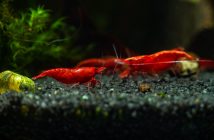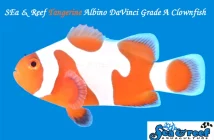
This week our featured fish spotlight is A. lennardi. This extremely rare and beautiful wrasse is seldom imported into the United State but if you are lucky enough to find one of these fish and it’s in your budget then this is a wrasse you might want to consider for your reef aquarium. This week in fact, Quality Marine received in some of these fish for the first time in several years.
A. lennardi, also known as Lennard’s wrasse, has neon blue and yellow horizontal lines and it ranges from the Eastern Indian Ocean to Northwestern Australia but it is seldom available in the US aquarium trade. It’s not that the fish is so rare in the wild. The rarity has more to do with where the fish can be collected and the resources it takes to safely get them to a collection station for acclimation.
In the wild, adults can be found singly or in pairs around the surge zones down to about 24 meters deep. The water in this region of Australia goes through drastic temperature changes based on the currents flowing through, which creates a large temperature range that A. lennardi must acclimate to regularly. This wrasse begins life in their juvenile colors of black with white stripes across its body, a yellow dorsal fin and white spots on its face. However, their color will drastically change as they grow and will continue to become more colorful. The stripes will turn into four or five intense, thick blue stripes against a golden body. The yellow and blue colors (shown in the photos) look exquisite when actinic lighting is provided.
Anampses wrasses are one of the hobby’s most colorful fish and some are extremely rare. Because of their well deserved reputation as finicky eaters, we generally recommend them only to experienced aquarists. A. lennardi should be housed in a large aquarium with sand bed as that is where they sleep and hide. All Anampses wrasses should be fed a varied diet of thawed marine based meaty foods and a high quality pellet or flake at least two to three times per day, and more would be better. Aquariums should be covered as these have a tendency to jump when startled.








